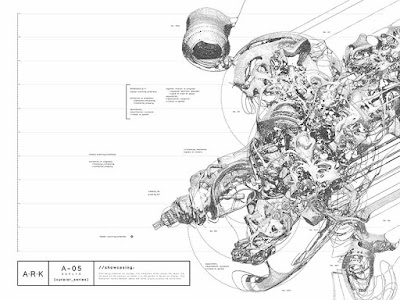T4T LAB 2019 Texas A&M University. Invited Professor: Joris Putteneers.
Team: Nicholas Houser, James Hardt, Nathan Gonzalez, Daniel Wang.
Territory
Our project is discussed in terms of simulation software and
algorithmic processing of interpretations of object as data across several
contextual territories. The fluctuation and ability to transcend across a
series of mediums: raw, cooked, and synthetic, is the Queer Object.
The queer object references contextual territory through a
series of pointing but never defining through the Derridean notion of indifferance.
The algorithm interfacing within itself, shows the notion of indifferance,
moments where the algorithm does not necessarily decide what to do but rather
just does. The algorithm works the same way in establishing its understanding
through a series of interfacing with contextual objects
The first relationship is territorial, this is an
epistemological quest by looking for, pointing at, through the notion of
artifacting across the raw, cooked ,and synthetic. The algorithm operates as
the smooth territory itself, where the contextual territory operates as the
vehicle for striation. The algorithm is not bound to a territory but places
itself through a series of referential objects that are able to be artifacted
from the contextual territory.
The algorithm can exist in all forms of territory because it
is always pointing at but never actually defines these moments. The territory
is defined the moment the context is referenced and artifacted.
The act of indifference and vicarious causation of
referenced objects results in the contextual territory to become the vehicle of
striation.
Raw, Cooked, Synthetic
Each territory represents the nature of the Raw, Cooked, and
Synthetic. The artifacts from each territory are results of incomplete
understandings of contextual objects due to inddiferance.
The Raw is a proto territory that yields an ancestral
algorithm. The artifacting process, since the algorithm interprets numerical
data, consist of a series of photogrammetry of objects found within the proto
environment, that are then translated into a cartesian coordinate system. The
data was then ran through the scripting of the algorithm itself to be in its
own image.
The Cooked is a territory that contains a series of objects
created by CAD. This denotes ideas of construction, technicality, and complete
control of Euclidean geometry. These objects are easier for the algorithm to
synthesize because of the similar language of numerical data, thus causing an
overlap in data and resulting in the kitbashing of referenced objects. The data
was then run through the algorithm to put it into its own image.
The Synthetic is a hyper real territory. The hyper real is a
system of software simulation simulating itself. This territory only exist within the digital
environment. The objects that exist within this territory are produced digitally
and are only meant to act in the digital realm. The
artifacts created, since the algorithm does not care to observe every data
point of the object, are the results of the jumbling of data points and
creation of simulated simulation. The hyperreality is the terminal stage of
simulation.
Maturity & Queerness
Since the algorithm is in a constant state of flux, both in
posture and territoriality, maturity and senescence can be derived. The
duration allows for the algorithm to continue the addition of artifacts.
Due to the constant act of referenced objects and striation
of the algorithm through such, the queerness emerges. The position of queerness
can be seen in the vector density drawing, section cuts and geometrical
resolution. As the algorithm continues its maturation, the flux can be seen in
a change of density of the framework of the vector trails. The vector trails
are the foundation of the generative nature in the workflow project, as the overlap
of trails unravel, the substance that can be territorialized by the artifacts
is depleted.
The resolution of the geometrical framework is also at the
will of the maturation of the algorithm. Areas can now be identified through
resolution of artifact versus algorithm other than just in terms of geometrical
relations but rather geometrical resolution and subdivision.
The flux of artifacts begins to divide and disassemble the
area in which the algorithm can operate. The addition of these artifacts
creates new spaces while divides others. Through the senescence of the
algorithm and addition of artifacts, the posture of the algorithm changes as it
matures. Upon referencing the contextual territory under constant acts of
striation the queer object is exhausted. The duration of the algorithm can be
seen through the decay and dismemberment of the original algorithm and growth
of invasive artifacts. The duration does not compromise the substance of the
object because it is an issue of kind and not to degree at which the posture is
lost.
Simulation
The algorithm does not need to exist in our current reality,
rather we are laying the frame work for the next reality in which this will
occupy, The architecture of the hyperreal, because what is the difference from
the architecture of the a priori world of our reality.
The Hyperreal is the terminal stage of the simulation,
because the hyper real is indistinguishable from reality, and thus the process
is repeated from the raw to the cooked to the synthetic, recursively.
Conclusion
The algorithmic
exhaustion, theory, and queerness are all connected through the results of
simulation software. The essence of simulation is queer. The aspects of flux
that are produced in terms of fluidity change and indefinability relates
exactly back to queer theory.
The workflow of this project showcases the view of machine
vision and simulation software being applied to all principles of territory,
section, elevation, program and aesthetics. They are all adaptive to different Variables
that can alter both the simulation program and the algorithm which ultimately
leads to the absolute exhaustion of workflow ending the life of the queer
object and simulation.



































































